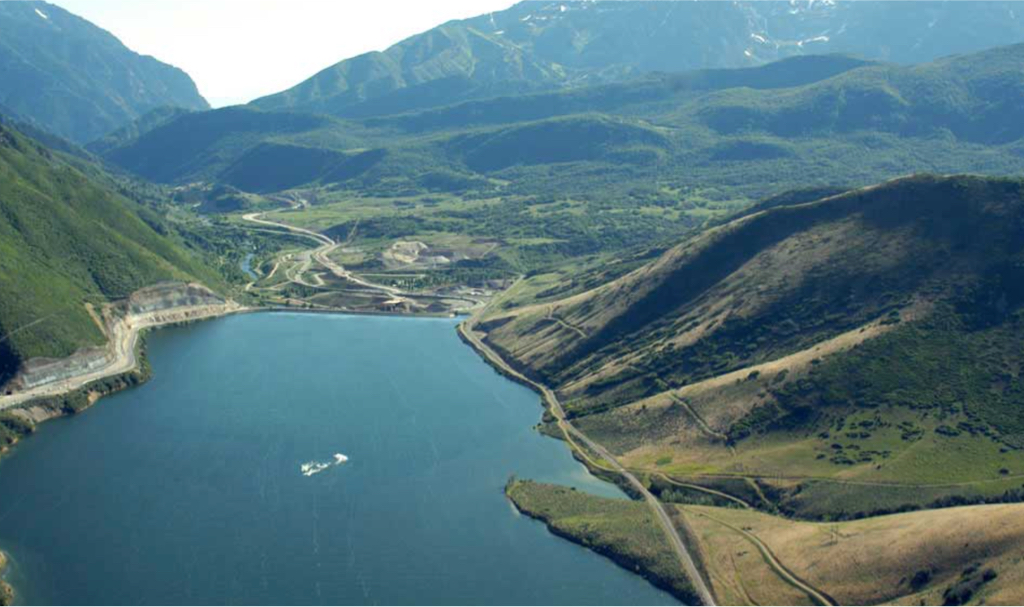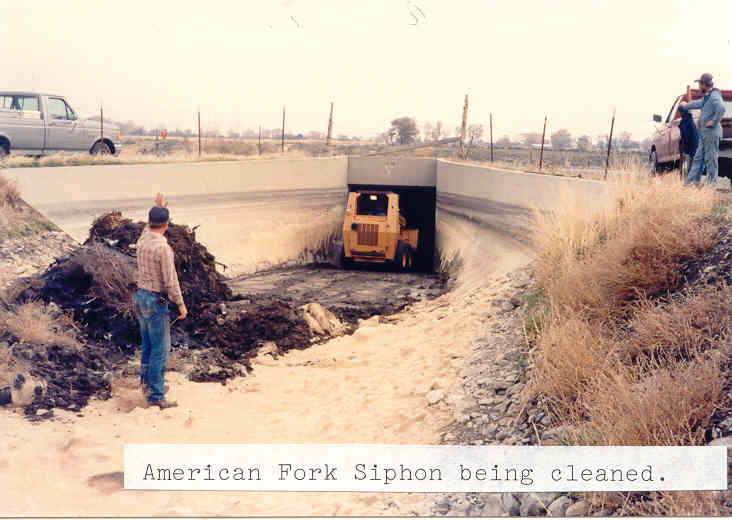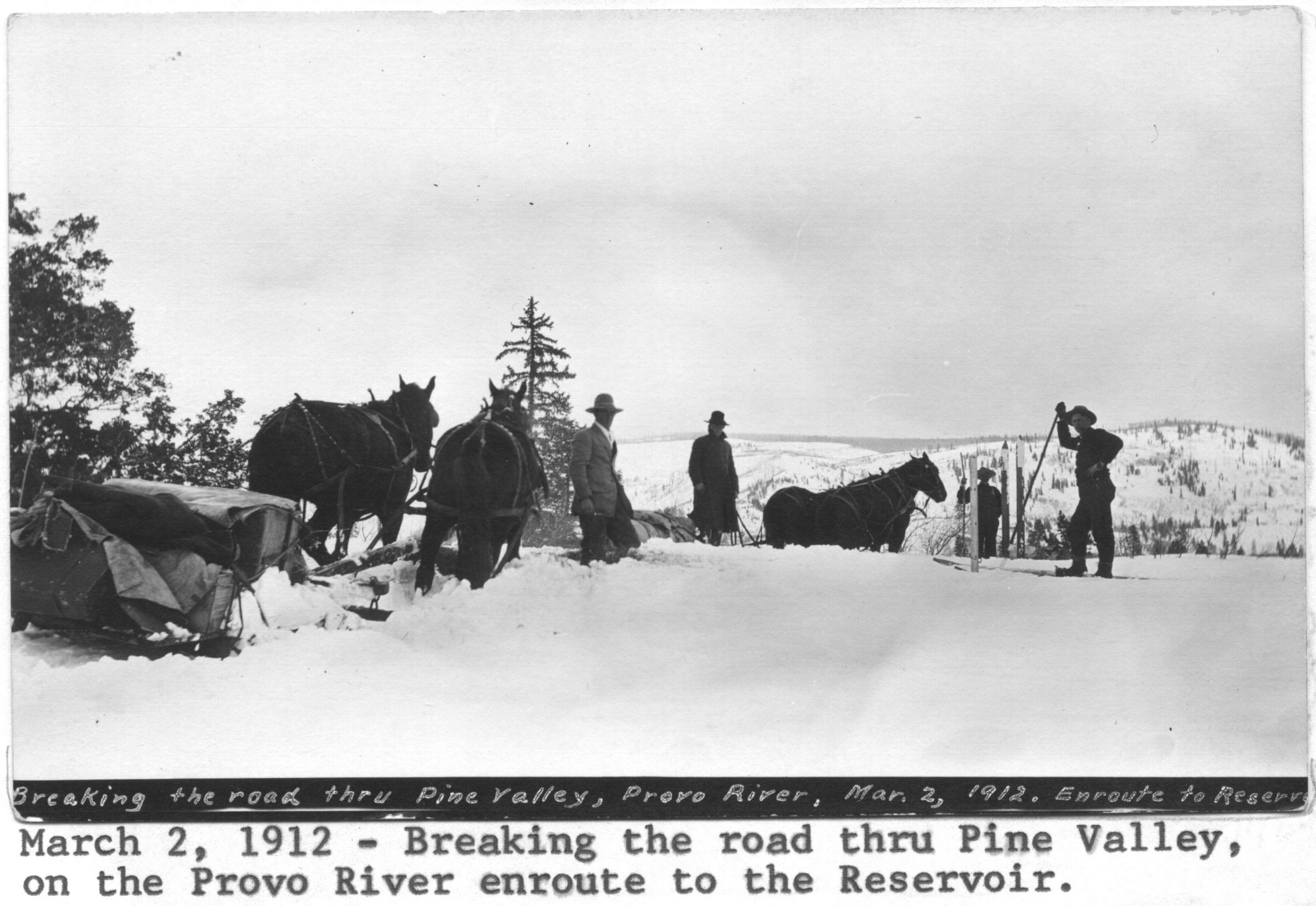Association History
Since the first settlers arrived in the Provo area in the mid 1800’s, water has been diverted from mountain streams for irrigation. As growth continued into the 1930’s, it became apparent that additional water from adjacent drainages would be essential to assure an adequate supply of water to the irrigated area and to facilitate future growth. As an indication of the water shortage, during the period 1931-1935, storage in Utah Lake fell from 850,000 acre-feet (ac-ft) to 20,000 ac-ft. A desperate water shortage was also experienced by Salt Lake City in the 1930’s. As a result of these water shortages, the City of Provo and five other Utah County communities that needed additional domestic water supplies joined with Salt Lake City and the irrigation interests to sponsor the Provo River Project.
The Project was initiated under the provisions of the National Recovery Act of 1933 and approved by the President in 1935. Construction of the Project began in May 1938, with the first water becoming available in 1941 upon completion of Deer Creek Dam. Construction of some features of the Project was severely hampered by wartime scarcities of manpower, materials and funds. Work on the Duchesne Tunnel had to be stopped in 1942, although construction continued on a small scale on the canal system and the Salt Lake Aqueduct. In 1947, full-scale construction resumed. Construction of features of the aqueduct division started in 1939 and was completed in 1951. Several improvements and facilities have been constructed since the original Project construction, such as the dikes and easements along the Upper Provo River. The Association was eventually contracted by the Bureau of Reclamation to maintain and operate Project features, and loaned the Association funds to continue building, operating, and maintaining the Project.
The Association is in the process of repaying loans from the Bureau of Reclamation, and full repayment of the original construction costs is expected in 2023.
Today, the Project provides a supplemental water supply for irrigation of farmlands in Utah, Salt Lake, Summit and Wasatch Counties, as well as an assured domestic water supply for communities in northern Utah County and the Salt Lake Valley. The key feature of the Project, the Deer Creek Dam, is located on the Provo River approximately 16 miles northeast of Provo City. The dam stores water from the Weber River diverted by the Weber-Provo Diversion Canal, flows from the headwaters of the Duchesne River diverted by the Duchesne Tunnel, and Provo River flood flows. The Other major structures of the Project include the Weber-Provo Diversion and Canal, Duchesne River Diversion and Tunnel, Murdock Diversion Dam, Provo River Aqueduct, and Jordan Narrows Siphon Penstock and Pumping Plant.
Reclamation Reform Act (RRA)
In 1902 Congress enacted the Reclamation Act for the purpose of encouraging development of the West through family farming, while limiting speculation on land that could be used for agricultural purposes. The Provo River Project was one of many water projects subsequently authorized by Congress to deliver water developed by the Bureau of Reclamation. Acreage limitations instituted to allow for equitable use of Reclamation water were further defined and codified in the 1982 Reclamation Reform Act (RRA). Each year water users across the West are required to file RRA forms prior to receiving Reclamation project water.
Water users receiving Provo River Project water are among those required to file RRA forms, and may download the necessary forms using the link below. Questions regarding RRA and the use of Provo River Project water may be directed to the Executive Administrator at the Association’s main office at (801) 796-8770.

Requests for Bids and Proposals
Provo River Water Users Association 2025 General Master Plan Update
The Provo River Water Users Association (PRWUA) is inviting proposals for the 2025 General Master Plan Update. Interested firms should submit their proposals by August 1, 2024. Detailed submission guidelines and evaluation criteria are outlined in the attached PDF documents. For more information, download the linked PDFs below.


